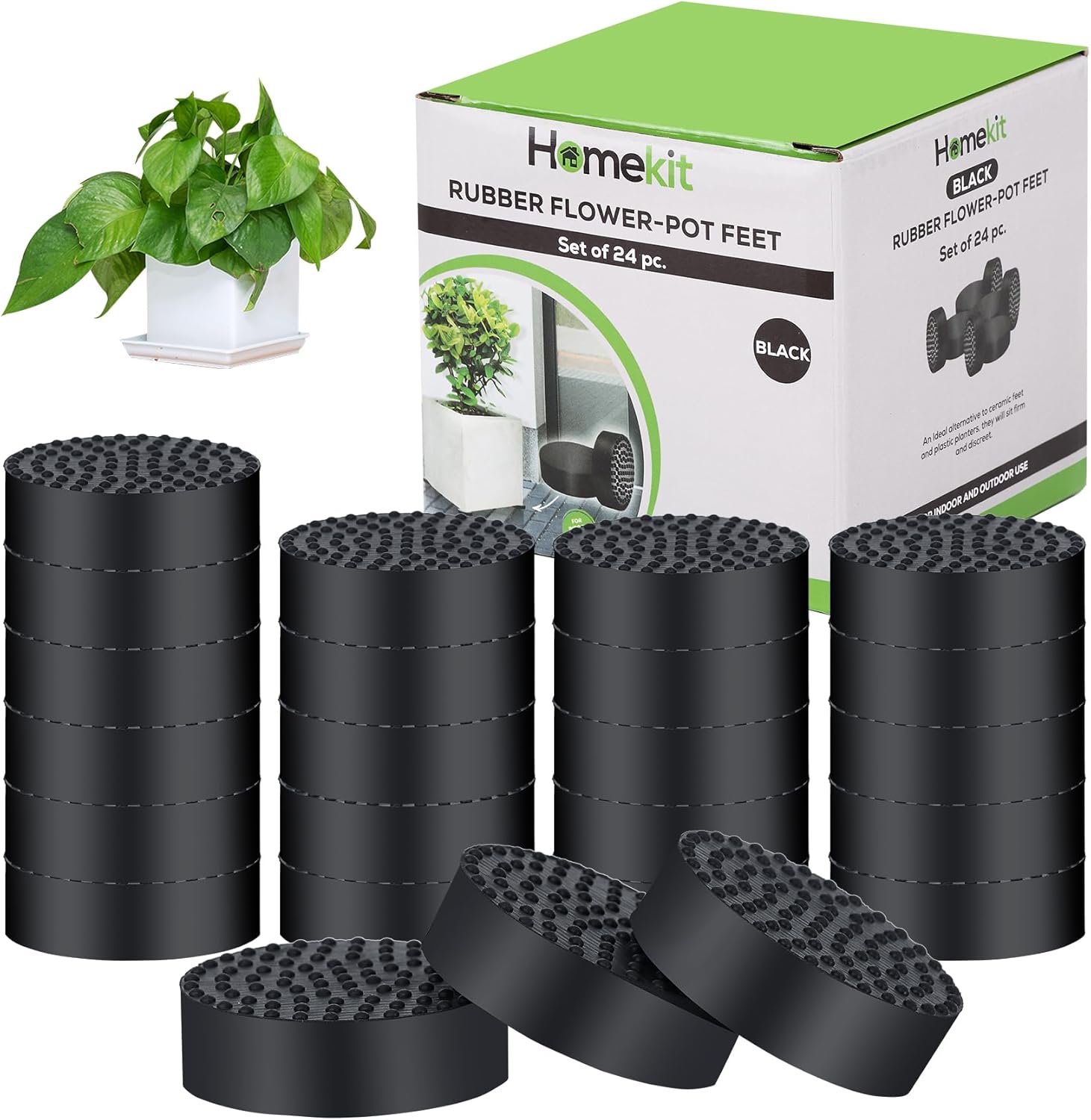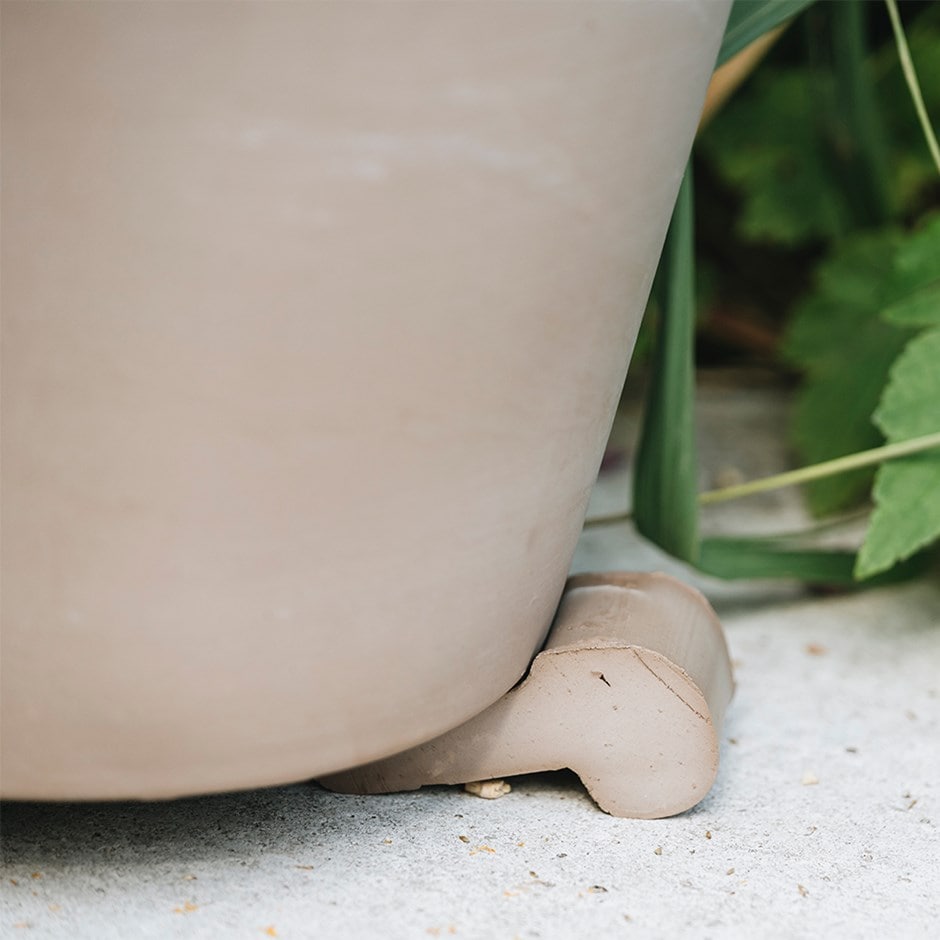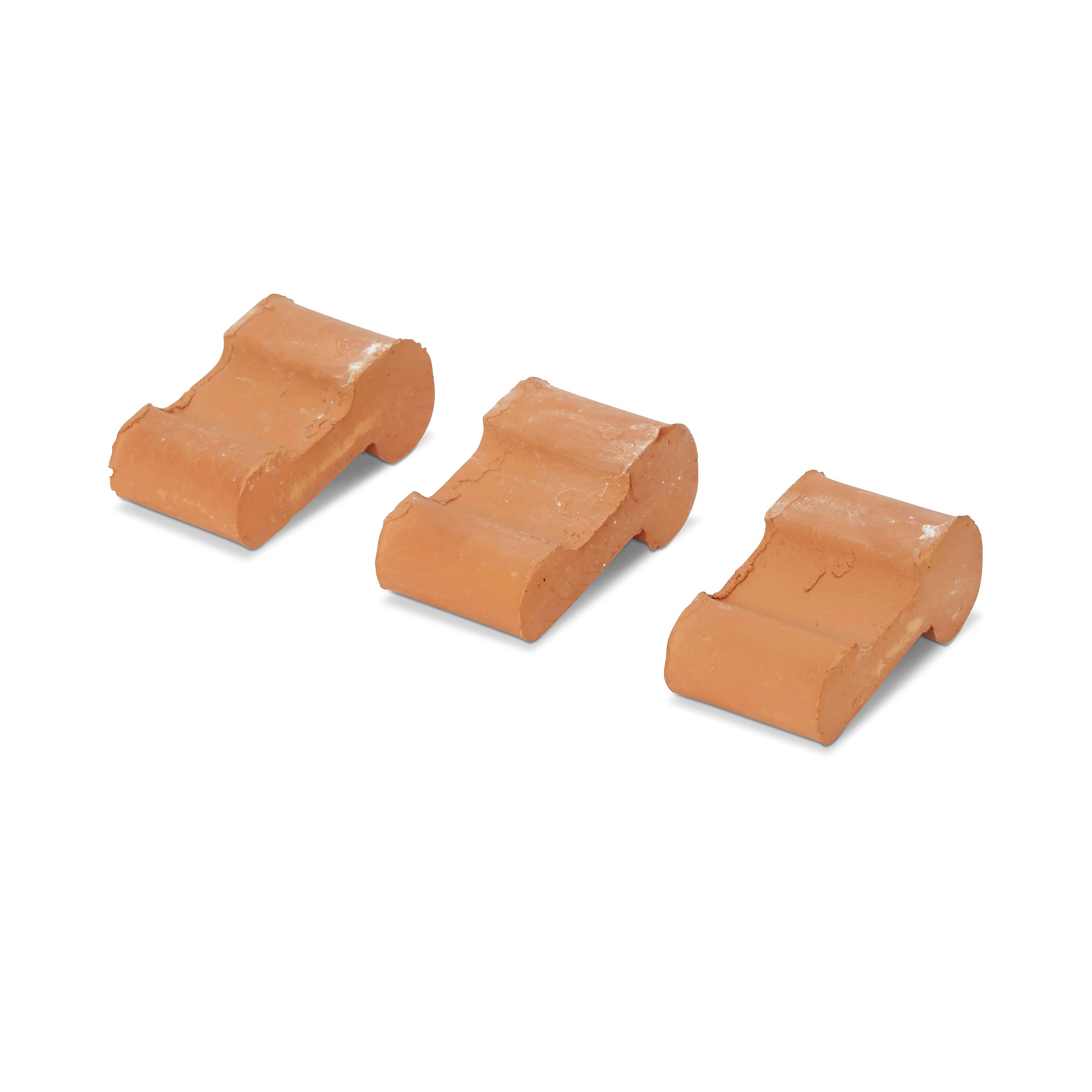I stopped my container plants from waterlogging with these simple, money-saving DIYs – they will winter-proof your potted plants for free
Provide drainage and weather protection for your garden planters and it's super-easy to make your own
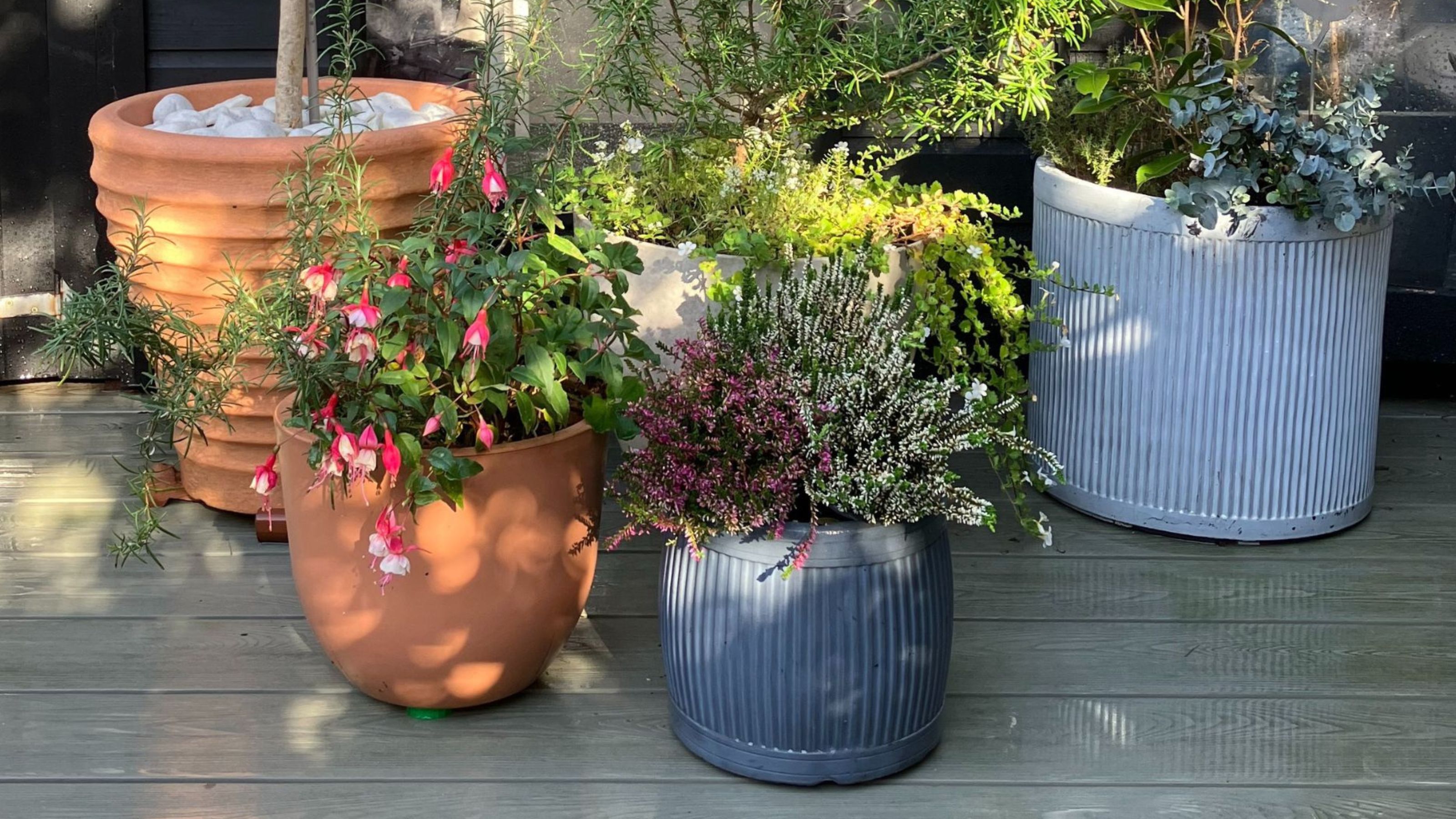

With things quieter in the garden, it can be a good time of year to give pots and planters some TLC to make sure they’re prepped for the colder and wetter weather. A job that often gets forgotten about - but one that is essential for autumn and winter - is adding pot feet underneath containers. And this year, I’ve tried making my own to save money.
‘The benefits of using pot feet for containers are considerable,’ says Julian Palphramand, Head of Plants at British Garden Centres. ‘In winter, they raise containers just a few centimetres above cold, damp surfaces, allowing excess water to drain freely. This prevents waterlogging, which is a common issue that can lead to root rot when soils remain wet, and temperatures drop.’
‘And by lifting terracotta and ceramic flower pots off the ground, pot feet also reduce the risk of frost damage and cracking, helping your containers last for many seasons. They also promote better airflow around the base of the pot, keeping the soil fresher for longer.’
But while the benefits of using pot feet for your container garden are plentiful, they can work out pricey to buy if you have lots of pots and planters, like me. But with some savvy recycling, I’ve come up with some DIY alternatives that haven’t cost me a penny.
1. Use plastic bottle lids as pot feet
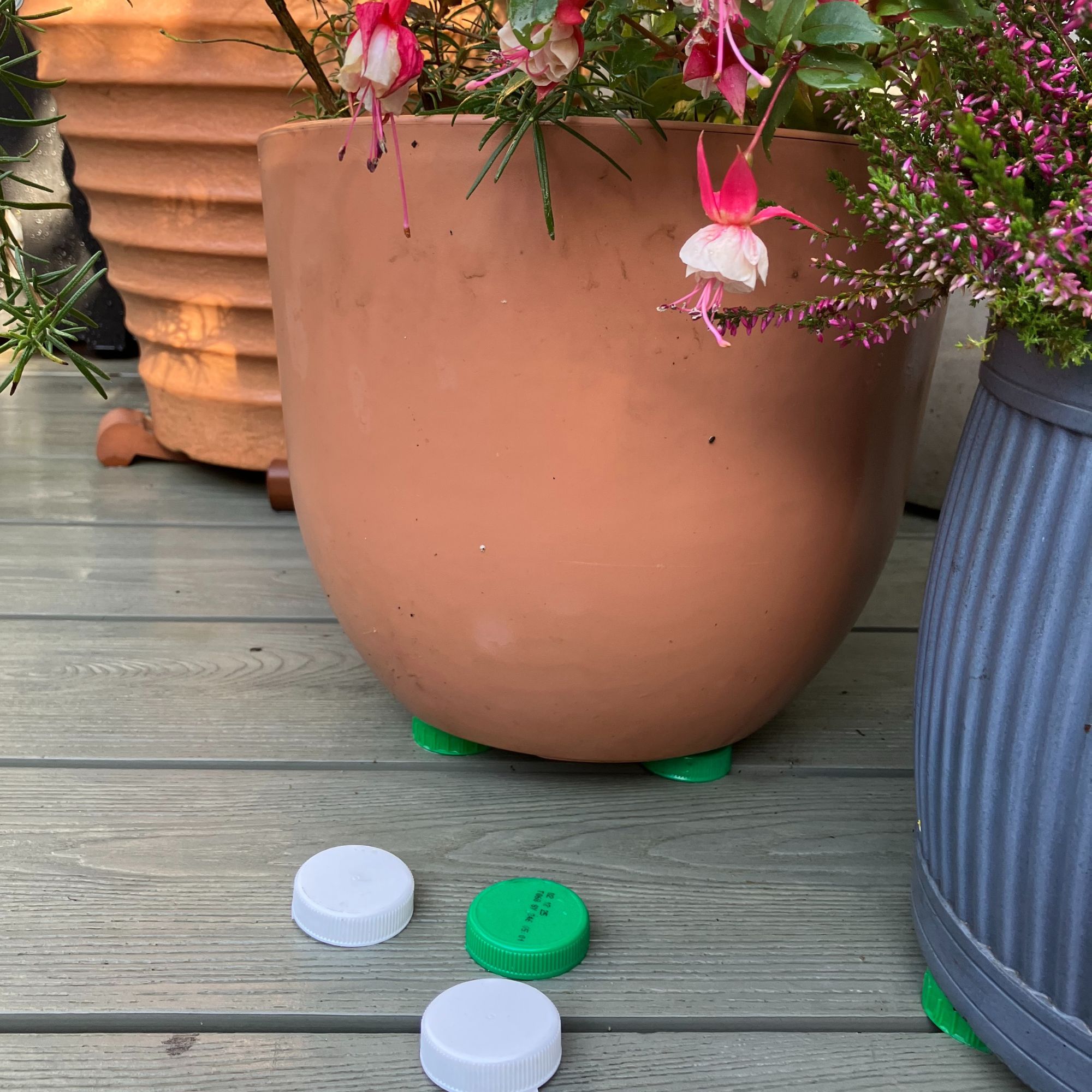
Something we end up with lots of at home are empty milk and orange juice bottles, and while there are lots of ideas for how to reuse plastic bottles in the garden, using the coloured plastic lids to make pot feet is another clever recycling idea and something I’ve got an endless supply of.
Small but strong, the plastic lids make sturdy pot feet that are great if you have smaller, lightweight pots. Depending on the size of the pot’s base, you’ll need either three or four lids per pot, which need to be spaced evenly apart and placed underneath the pots so their weight is evenly distributed.
‘The advantages of pot feet don’t stop when the weather warms up,’ adds Julian. ‘In summer, pot feet improve air circulation beneath containers, which helps soil dry more evenly and quickly after plant watering or rainfall. This can reduce the chance of fungal problems that thrive in damp, stagnant conditions.’
Sign up to our newsletter for style inspiration, real homes, project and garden advice and shopping know-how
2. Put wine bottle corks under pots
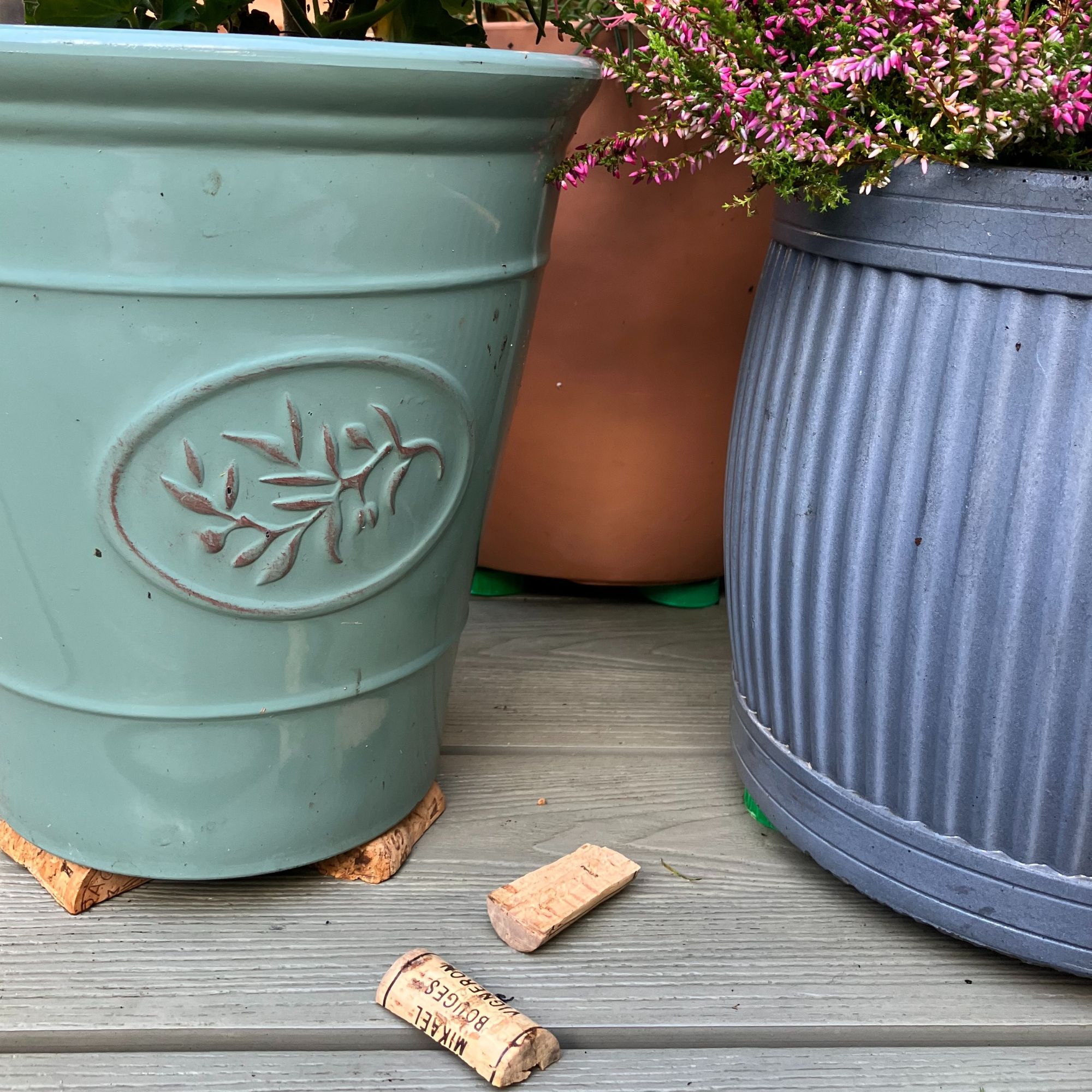
Another household staple that I often have a plentiful supply of is wine corks. While natural corks can be chopped up and added to the home compost bin, and synthetic corks can be recycled along with the bottle, I’m always keen to try out any good upcycling ideas for the garden, so using leftover corks to make pot feet is a winner.
Start by halving your corks, using a sharp knife and very carefully slicing a cork down the centre lengthways so you’re left with two long semi-circular halves. You’ll need three or four halves for each pot, positioning the corks flat side down on the floor (evenly spaced apart) and resting the plant pot on top.
3. Use leftover tiles to elevate planters
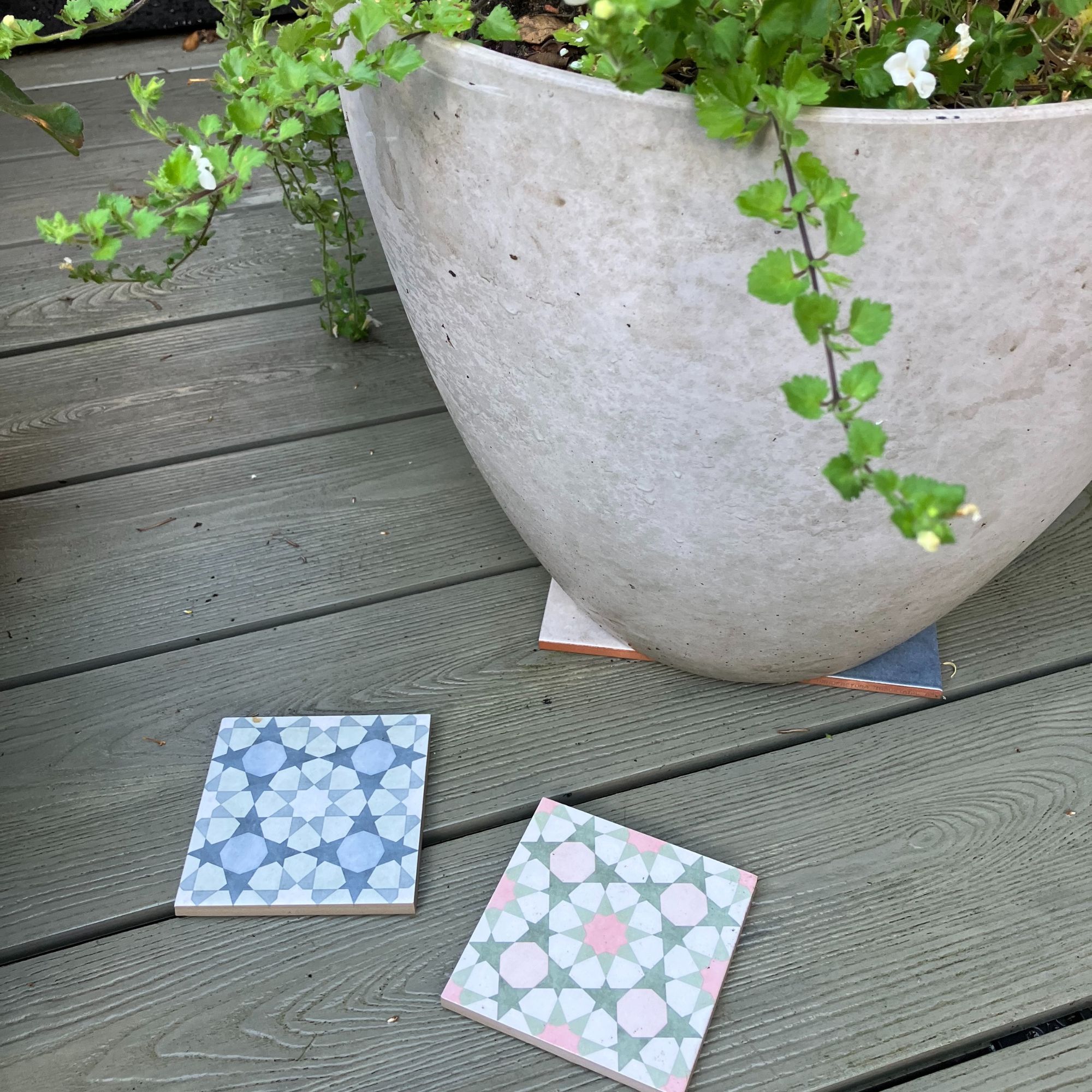
Tiles leftover from home tiling projects make a great pot feet alternative and a super-easy budget garden idea that costs nothing. So instead of boxes of surplus tiles taking up space in the garden shed, putting a few underneath garden planters will elevate them just enough to provide the drainage they need.
Depending on the size of the tile, you can use them as they are and position three or four under each planter. Or if you have a tile cutter to hand, it’s easy enough to cut standard-sized tiles into smaller sections so you'll have plenty for all your pots.
‘Another benefit of using pot feet underneath planters is pest prevention,’ adds Julian. ‘Pots raised on feet are less accessible to garden visitors like slugs and snails, which tend to crawl along the ground. By creating a small barrier, pot feet help keep slugs away from tender plants, potentially saving your summer blooms or vegetables.’
4. Cut plastic pipe into slices
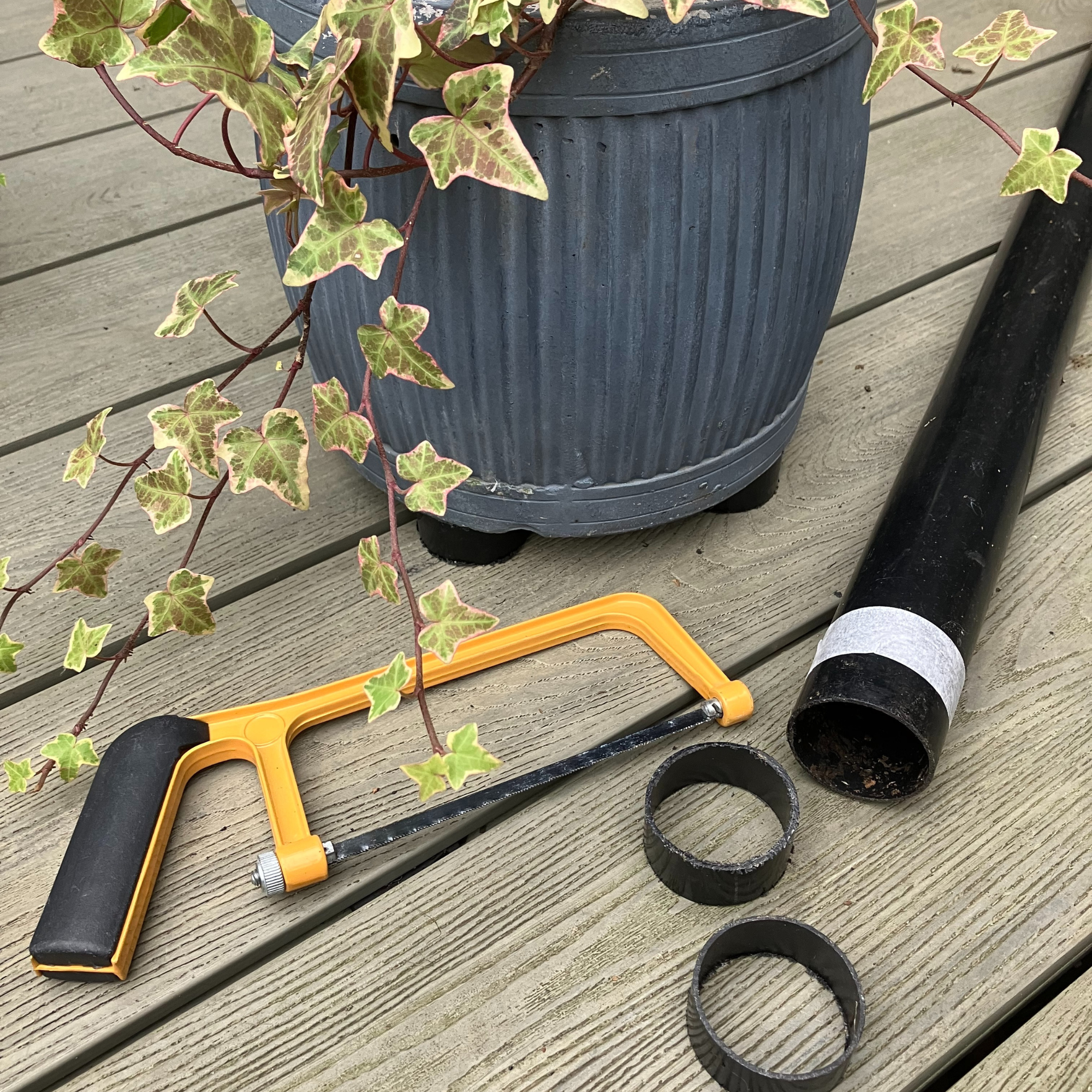
Never one to throw anything away for fear that it might come in useful one day, my garden shed is home to all sorts of bits and pieces leftover from DIY and gardening projects. So I loved this idea I spotted online that makes use of leftover lengths of plastic pipe, by simply cutting it into slices to make individual pot feet to protect potted plants.
Great for larger pots, just make sure that the plastic pipe you use is fairly thick and sturdy so it will support the weight of your pot (plastic drainpipe is ideal), then just use a small handsaw to cut the pipe into sections that can then be placed underneath the pot. I found it helped to wrap a piece of tape around the pipe so you can use this as a guideline for where to saw, which will ensure that all your sections of pipe are a similar depth.
5. Make cement pot feet
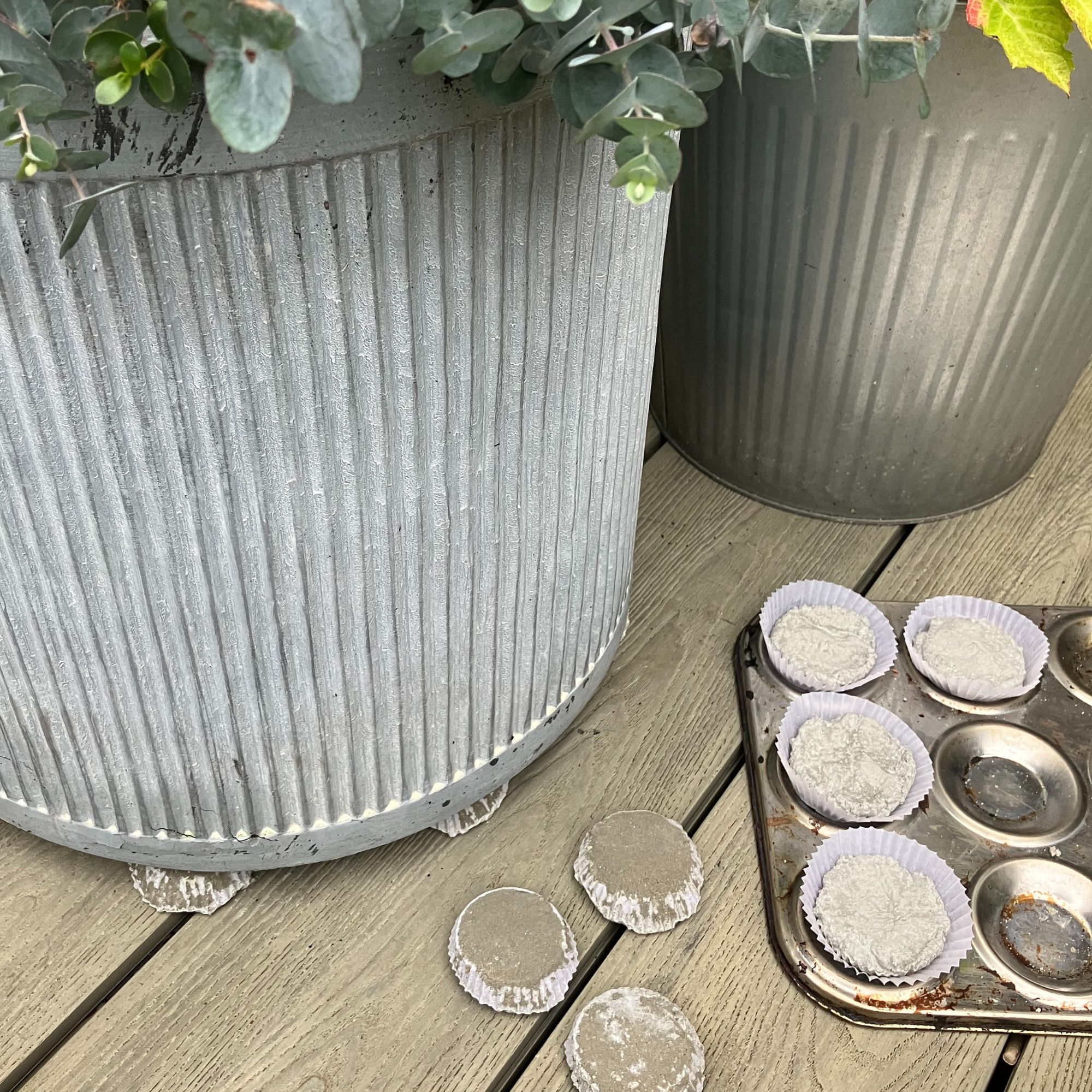
Another easy garden idea that looks fun and is fairly straightforward is these mini cake-shaped pot feet made out of cement. If you’ve ever had leftover bags of cement (from laying slabs or fixing fence posts) that have been left to dry up or go rock hard at the back of your shed, then this is a great way to make use of them.
Mix up your cement in an old plastic bowl and simply spoon some of the mixture into paper cake cases, levelling them out and leaving to set - aim for around 2-3cm deep in each - I also used an old cake tin to help them keep their shape. Once the cement is set, just peel off the paper case and slip a couple of the cement ‘cakes’ under your planter to raise it off the ground.
Shop these alternative pot feet
I've saved money by making my own pot feet for my garden containers. Do you have any bright ideas or clever upcycling tricks that you use to make yours?

Lisa is a freelance journalist who has written about interiors for more than 25 years. Previously editor of Style at Home magazine, she has worked on all the major homes titles, including Ideal Home, Country Homes & Interiors, 25 Beautiful Homes and Homes & Gardens. She has covered pretty much every area of the home, from shopping and decorating, crafts and DIY to real homes and makeovers and now regularly writes gardening stories for Ideal Home.
